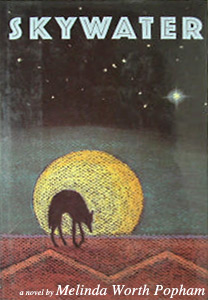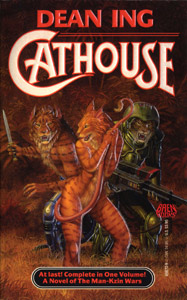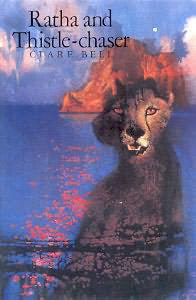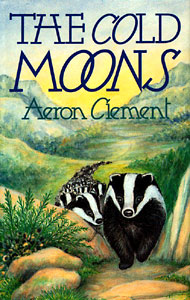
The Yarf! reviews by Fred Patten
Note: This is a fraction of the entire listing. If you’re on broadband, you might want to try the high speed version instead.

The Yarf! reviews by Fred Patten
Note: This is a fraction of the entire listing. If you’re on broadband, you might want to try the high speed version instead.
Welcome to the “Patten’s reviews” wing of the Anthro Library! Since this is a collection of columns from a dormant (if not dead) furzine called YARF!, a word of explanation might be helpful: In its day, YARF! (aka ‘The Journal of Applied Anthropomorphics’) was perhaps the best-known—and best in quality—of furry zines. Started in 1990 by Jeff Ferris, YARF!’s roster of contributors reads like a Who’s Who of furdom in the last decade of the 20th Century. In any issue, the zine’s readers could expect to enjoy work by the likes of Monika Livingstone, Watts Martin, Ken Pick, and Terrie Smith; furry comic strips such as Mark Stanley’s Freefall… and Fred Patten’s reviews of furry books and comics.
Unfortunately, YARF! has been thoroughly inactive since its 69th issue, which was released in September 2003. We can’t say whether YARF! will ever rise again… but at least we can prevent its reviews from falling into disremembered oblivion. And so, with the active cooperation of Mr. Patten, Anthro is proud to present Mr. Patten’s review columns—including the final one, which would have appeared in the never-printed YARF! #70.
Full disclosure: For each reviewed item, we’ve provided links you can use to check which of four different online booksellers—Amazon.com
, Barnes & Noble
, Alibris
, and Powell’s Bookstore—now has it in stock. Presuming the item in question is available, if you buy it Anthro gets a small percentage of the price.
 #7 / Sep 1990 |
||||
|
|
|
|||
|
|
|
|||
|
|
|
|||
 |
||
| Title: | Skywater | |
| Author: | Melinda Worth Popham | |
| Publisher: |
Graywolf Press (St. Paul, MN), May 1990 |
|
| ISBN: | 1-55597-127-X | |
|
206 pages, $17.95 |
||
| Availability: | Am |
|
Skywater is a superb nature novel in the tradition of Jack London’s Call of the Wild. It follows a band of coyotes who are driven by the pollution of the ground water from their home territory in the Sonora desert near Yuma, Arizona. The coyotes are introduced through the eyes of an old retired couple, Albert and Hallie Ryder, who give them names based on brand products: Dinty Moore, Kodak, Boyardee, and the like. The novel uses these for convenience, but makes it clear that this is a deliberate human convention. The coyotes’ own awareness of their identities is more basic: The leader, the loyal follower, the challenger, the two females, the three-legged (injured) one, etc. The coyotes are anthropomorphized as little as possible, mostly just to give them a common goal—to search for the legendary Skywater, the home of all waters—and an awareness that it to their mutual advantage to seek this goal together, instead of living as loners as coyotes usually do.
Popham convincingly puts the reader into a coyote’s mind, to see and think and be aware as a real coyote. The small amount of anthropomorphization is consistent with native American psychologies and beliefs. The leader, Brand X, thinks of the Moon in terms of his dead father’s white eye; the coyotes superstitiously regard undrinkable seawater as reserved for the spirits of their ancestors. But in general, Skywater presents the coyotes realistically rather than humanizing them to the extent, say, of Felix Salten’s Bambi: A Life in the Woods.
The story takes a group of scruffy, look-alike, non-talking animals and succeeds in making each of them sharply individualized, capable of nonverbal communication, and sympathetic. It also realistically presents the dangers faced by modern Southwestern wildlife: Crossing busy highways, the large Yuma Proving Ground weapons test range, the inevitable result when large predators lose their fear of humans and come raiding for food in human communities. Popham shows that there are many people who are seriously concerned with wildlife preservation who nevertheless feel that coyotes are so prolific and are a menace to genuinely Endangered Species that they need to be cut back. It is because she presents all the ecological arguments in such an objective manner, and still comes out strongly in favor of the coyotes, that the ‘moon-callers’ stand out as such sympathetic characters. And it is because this is primarily an adventure novel and only secondarily an educational tract that readers will enjoy it whether they care about the Message or not. Seven coyotes against modern human civilization—do they really have a chance? Read Skywater and find out.
Skywater is realistic enough that it may not be to the taste of those who prefer anthropomorphs who dress, talk, and act just like regular humans in animal costumes. Those who are intrigued by characters who mix their species’ individual traits with human-level intelligence will enjoy Skywater—and may find it a valuable reference for constructing coyotid Furry characters. ![]()
 |
||
| Title: | Shaman | |
| Author: | Sandra Miesel | |
| Publisher: |
Baen Books (New York), Oct 1989 |
|
| ISBN: | 0-671-69844-3 | |
|
306 pages, $3.50 |
||
| Availability: | Am |
|
About half of Shaman does not have any anthropomorphic characters, but it is a very good novel that you should enjoy anyhow. Ria Legarde is an unhappy citizen in an overly regimented and monitored future. She has dreams in which her consciousness visits parallel worlds, some better and some worse. Her mind is lured to an Earth that has trained ESP powers, and which has bioengineered otters to partnership with humanity. Ria becomes a close friend of Lute, an otter technician, and visits him often. There is a lengthy scene in which she is invited to the otter’s coastal community to join one of their festivals. Ria remains in mental contact with Lute when she must return to her own world, and the two work together to save her from PSI, the ‘thought police’.
Miesel extrapolates upon the otter’s natural playfulness and gregariousness to give her intelligent otter people a lively and impish personality, which is just as serious and practical as the drably-enforced ‘responsibility’ of Ria’s society. The otters’ own communal life-style is patterned after the extended families of the Polynesians. ![]()
 |
||
| Title: | Cathouse | |
| Author: | Dean Ing | |
| Publisher: |
Baen Books (New York), May 1990 |
|
| ISBN: | 0-671-69872-9 | |
|
247 pages, $3.95 |
||
| Availability: | Am |
|
Dean Ing’s Cathouse is in no way related to Michael Peak’s Cat House, reviewed in Yarf! #2.
Cathouse consists of two novellas that were originally published in Baen’s The Man-Kzin Wars (June 1988) and Man-Kzin Wars II
(August 1989). If you have those, you don’t need this. These are shared-world stories, set in Larry Niven’s Known Space universe. Niven established in his stories that mankind has repeatedly beaten the cat-like Kzinti in a series of violent space wars, but the instinctively warlike Kzinti won’t give up. In this new series, other writers are describing the events of the Fourth Man-Kzin War. Cathouse is fully understandable on its own, and Ing is more successful than some writers in depicting the Kzin as intriguing Furry anthropomorphs rather than just a savage alien enemy.
Carroll Locklear is human scholar captured by a small Kzinti warship when the war breaks out. He is dumped on an unexplored planet for temporary safekeeping. Locklear discovers that the planet is actually a base of the Outsiders, mysterious aliens whom nobody has ever seen but who left their artifacts throughout the galaxy. The world is a prehistoric zoo, with specimens in suspended animation from both and the Kzin homeworld of 40,000 years ago.
In the first story, Locklear has to awaken the ancient Kzin, reach an understanding with them, and manipulate ancient-modern Kzin rivalries to his advantage to gain his freedom. In the second story, Locklear is having his own problems with the Neanderthals whom he revives in the Earth biosphere, but these fade to insignificance when human space-navy mutineers come to the planet. Locklear has to return to the Kzin biosphere and get involved in their deadly politics again to win their help against the modern humans, who are the most viciously murderous of all.
Ing shows the Kzin as tiger-like anthropomorphs with an intelligence that has evolved from feline traits. A key story development is the manner in which Locklear and some of the Kzin use their intelligence to rise above their conflicting instincts for their mutual advantage. ![]()
 |
||
| Title: | Ratha and Thistle-chaser | |
| Author: | Clare Bell | |
| Publisher: |
McElderry Books (New York), Apr 1990 |
|
| ISBN: | 0-689-50462-4 | |
|
232 pages, $14.95 |
||
| Availability: | Am |
|
Bell’s Ratha series (Ratha’s Creature, 1983; Clan Ground, 1984) is set twenty-five million years in Earth’s past. Hominids have not yet appeared, but a clan of large, cougar-like cats have evolved to intelligence. They have developed a language and a tribal society, and they have learned how to herd primitive deer and horses for a permanent food supply. The cats protect them from other predators, and take care that their own appetites do not outmatch their herd’s breeding powers. However, the clan is far outnumbered by hostile wild felines, some of which are unintelligent and some of which are equally smart but unwilling to restrain their gluttony and would slaughter the whole herd for an immediate feast. Also, the cats of the clan have noticed that the offspring of mating within the clan are always intelligent, whereas the cubs of matings between themselves and wild cats may or may not be intelligent.
Ratha is introduced in Ratha’s Creature as an adventurous adolescent who dares to question the traditions and beliefs of the clan. She is driven out to become an outcast. During her wanderings before she returns to the clan, she mates with an Un-Named cat; but when her cubs are apparently unintelligent, she sorrowfully abandons them. By the conclusion of the first novel, Ratha is the new leader of the clan of the Named, and the adventures in Clan Ground confirm her in this position.
Ratha and Thistle-chaser is set three years after the first novel and two years after the second. It tells two parallel stories. One is of a crippled, solitary young cat who is obviously one of Ratha’s abandoned cubs. The second is of the clan, forced by a drought to search for a new pasture for the herdbeasts, who discover the seacoast. Ratha’s daughter has already staked out her lonely home here, surviving on shellfish and fish trapped in tidal pools. The wild cat’s intelligence is erratic, but to what extent is this actual feeble-mindedness and to what extent is it due to growing up as a truly feral child? Whatever the reason, is she an equal of the clan? Intelligence aside, what psychological and emotional scars does she bear that might prevent her friendly adoption by the clan? And can Ratha, now accustomed to leadership, afford to acknowledge that she made a mistake? Ratha’s two old clan friends, Thakur and Fessran, watch with growing unease as stubbornness and misunderstandings on both sides appear to lead toward an unavoidable and tragic conflict.
Bell’s intelligent cats are attractive creatures. They are plausibly anthropomorphized, with consciousness laid over their feline attributes rather than replacing them. In fact, it is difficult to read these books without being subtly depressed because Ratha’s people are not alive today—i.e., their fight for survival as told in these stories must have ultimately failed.
If you have read the first two novels, you will enjoy this one. If you have not, you should start with Ratha’s Creature. In addition to giving the full background of Ratha and her cubs, it is a more satisfying story. Ratha’s actions seem more like her own decisions. In Ratha and Thistle-chaser, there is more of a feeling of the author’s manipulation of the story. It soon becomes clear that Ratha and Thistle-chaser are going to stubbornly avoid listening to reason and refuse to see each other until a Dramatic Confrontation at the climax of the novel. It is well-handled when it comes, but it is expected. ![]()
 #8 / Nov 1990 |
||||
|
|
|
|||
|
|
|
|||
|
|
|
|||
 |
||
| Title: | The Cold Moons | |
| Author: | Aeron Clement | |
| Illustrator: | Jill Clement (pictures & maps) | |
|
|
||
| Publisher: |
Delacorte Press (New York), Apr 1989 |
|
| ISBN: | 0-385-29694-0 | |
|
Hardcover, xiii + 333 pages, $16.95 |
||
| Availability: | Am |
|
|
|
||
| Publisher: |
Dell Laurel (New York), Jul 1990 |
|
| ISBN: | 0-440-550331-0 | |
|
xvi + 314 pages, $8.95 |
||
| Availability: | Am |
|
This is basically Watership Down with badgers instead of rabbits. It is more than a bland imitation, however. Badgers were protected in Britain until 1975, when they became identified as carriers of tuberculosis which was spreading to other animals, notably the domestic cattle population. A policy of killing infected badgers was applied so broadly that by the 1980s there was a serious danger of the total extinction of wild badgers in Britain. It was against this background that The Cold Moons was first published in Wales in 1987, to rally public and environmental support for the badgers.
Bamber, the sole survivor of a badger group gassed by humans, wanders into the larger community of Cilgwyn. His warning shocks its badgers, who react in various ways. Eldon, the complacent leader, hopes that it is a false alarm which they can ignore. Buckwheat, a council member, feels that they must migrate to a new home immediately. Palos, who seeks Eldon’s position, tries to turn the disagreement to his advantage. The arrival of the humans with their poison gas and hunting dogs forces the badgers to flee before they are fully ready. Their long trek across Wales is beset with hardships, tragedy, and heroism. During its long course, the badgers gradually come to rely upon two younger, stronger guides. Beaufort, Buckwheat’s son, is urged by his father to accept more responsibility; but while Beaufort is dutiful enough, he at first lacks the spark of leadership that the badgers desperately need. Kronos, Palos’ son, is an even worse schemer than his father, and he plots to trick the badgers into accepting him as a benevolent leader who will soon reveal himself as a sadistic dictator. The Cold Moons tells of the badgers’ search for a new home as they struggle against three enemies: the natural dangers of their trek; the deadly sabotage of Kronos which threatens to destroy them before Beaufort can grow into leadership; and the pursuing governmental badger extermination units.
This is good enough to merit a favorable recommendation, but it is still close enough to Watership Down to make comparisons inevitable, and it does not match the literary genius of Richard Adams’ classic. The Cold Moons is told in a narrative format; there is not a line of dialogue in it. For example:
Buckwheat asked Eldon to convene the council and went to fetch Palos as Beaufort moved over to inform Molyar. Buckwheat found a very dejected Palos lying down alone, deserted even by his mate, Tawna. He glanced up on hearing Buckwheat’s voice but refused to attend council. He no longer wanted any part of it or its members and just wanted to be left alone. Despite Buckwheat’s continued pleading there was no change in Palos’ attitude, and Buckwheat returned, bitterly disappointed in the badger who had changed from being an eminent figure to a pathetic one.
By presenting the entire novel in this third-person, voice-over manner, Clement mutes its intensity. The characters seem like historical figures rather than living people whom the readers can care about.
In both novels, the story continues beyond the point that the reader expects to be the end of the book. But Adams makes General Woundwort’s attack against the rabbits’ new home into an exciting extension of the story, whereas Clement’s surprise addition seems weak and anticlimactic. Both novels radiate their authors’ obvious love of nature, but Clement pushes his message too deliberately, to the extent that The Cold Moons has a Disneyish ‘all animals are friends; only Man the Hunter kills’ air of propaganda aimed at the uneducated animal-loving urban public.
But these are quibbles. You may be annoyed by certain aspects of the novel, but you will not feel that you wasted your time by reading it. ![]()
 #9 / Dec 1990 |
||||
|
|
|
|||
|
|
|
|||
|
|
|
|||
 |
||
| Title: | Rememory | |
| Author: | John Betancourt | |
| Publisher: |
Popular Library/Questar (New York), Oct 1990 |
|
| ISBN: | 0-445-21045-1 | |
|
197 pages, $4.95 |
||
| Availability: | Am |
|
This is a cross between Blade Runner and Total Recall, a fast-moving cyberpunk thriller set in a depressing future. The story, full of violent crime and political terrorism, is forgettable. What is memorable is the glimpse of new bioengineered societies that combine aspects of racial minorities, religious sects, and urban super-gangs.
There is superpollution to the degree that nose filters are needed to breathe in the streets. Aircars fly through the skies, but it costs $500 for three hours at a parking meter. Individual police forces have been absorbed into the SecurNet, a Gestapo that ruthlessly enforces national public order. Major government offices have become hereditary, although the pretense of democracy is still maintained.
People are dropping out of this society through bioengineering. It began a couple of generations earlier as cosmetic surgery. It has evolved into the rejection of a human race, which no longer offers anything to the individual, and the development of new artificial species that promise family and brotherhood. New ghettoes have formed for peoples such as the techs, proud of all their mechanical implants; the glitterfolk, pleasure-seekers who flaunt flashing electronics and neon body-parts; and especially the animalforms such as the catmen, the dogmen, the penguinmen, and others who have turned themselves into their chosen totem animals.
Slasher, Hangman, and Jeffy are three catmen criminals who specialize in robbing dogmen, the rivals of the cats. As the novel follows them, it flashes past intriguing details of the catmen and dogmen societies, with passing references to other animen. There are bodyshops such as Animen-R-Us, where humans can get themselves converted. Conversion used to be an individual adult choice, but now that animal communities have developed, parents have their children converted as soon after birth as possible. Catmen and dogmen can transform themselves at will, were-animal style, between a human bipedal posture and an animal quadrupedal stance. Animen adults have enhanced muscles and steel claws; children have plastic practice claws. Bioengineered body forms establish the basic feline or canine structure, including head-shape, fangs, claws, tail, and so on; but the skin and body-fur are easily interchangeable. A catman can appear as a tiger, a leopard, a cougar, a cheetah, a man-sized Siamese cat, or just about any other feline almost as easily as a human can change clothes. There can also be hybrids, such as a dogman smuggler with the head of a Doberman and the body of a wolf or a husky.
Rememory is worth reading for these glimpses of animan life, and for the semi-pathetic, semi-psychotic movement among the animen to deny their humanity and proclaim their adherence to their free animal nature, at the same time that they are developing their own political corruption and their own brutal Gestapo, the Shadowcats. The plot is for those who enjoy lots of blow-’em-up, shoot-’em-down action, chase scenes, and cynical double-crosses. ![]()
|
|